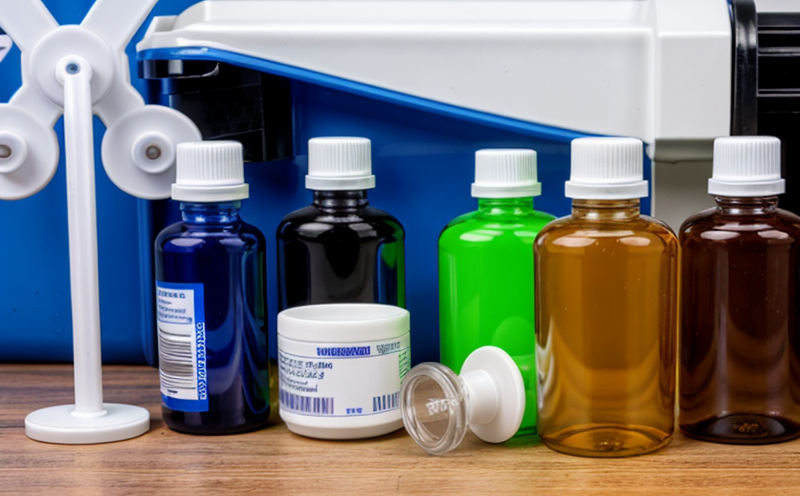ASTM D8302 Disinfectant Residues in Medical Waste
The ASTM D8302 standard test method is designed to quantify the residual levels of disinfectants in medical waste. This service ensures that healthcare facilities, waste management companies, and regulatory bodies can verify the effectiveness of disinfection processes used on medical waste. Proper disinfection is crucial for preventing the spread of infectious diseases by eliminating pathogens before the waste is processed further or disposed of.
The process involves collecting samples from various types of medical waste, such as sharps containers, biohazard bags, and other regulated materials. These samples are then prepared according to ASTM D8302 guidelines, which include proper labeling, preservation methods, and storage conditions. Once the specimens are ready, they undergo analysis using advanced analytical techniques like liquid chromatography or ion chromatography.
The primary goal of this testing is to ensure compliance with local and national regulations regarding medical waste management. By accurately measuring disinfectant residues, laboratories can provide reliable data that supports decision-making processes related to environmental protection and public health. Additionally, this information helps facilities maintain their certifications and licenses, ensuring they meet industry standards.
One key aspect of ASTM D8302 is its emphasis on accuracy and precision in measurement techniques. The standard specifies detailed procedures for sample preparation, reagent selection, instrumental setup, and data interpretation. Compliance with these requirements guarantees consistent results across different laboratories performing the same tests under similar conditions.
To achieve accurate measurements, it’s essential to follow strict protocols throughout every step of the testing process. This includes selecting appropriate reference materials calibrated against internationally recognized standards (such as ISO 17025). Proper calibration ensures that all instruments used in the analysis are functioning correctly and producing reliable outputs.
The importance of ASTM D8302 cannot be overstated given today’s increasing focus on sustainability and responsible waste management practices. By adhering to this standard, organizations demonstrate their commitment to reducing environmental impact while also safeguarding human health.
Customer Impact and Satisfaction
Our customers benefit significantly from our ASTM D8302 service through improved operational efficiency and enhanced safety measures. Here’s how:
- Enhanced Compliance: By providing accurate data on disinfectant residues, we help our clients stay compliant with stringent regulations governing medical waste management.
- Increased Efficiency: Our tests streamline the decision-making process for regulatory bodies and healthcare institutions by offering clear evidence of effective disinfection processes.
- Improved Safety: Through rigorous testing, we ensure that medical waste poses no risk to personnel involved in its handling or disposal.
We strive to exceed customer expectations by delivering high-quality results promptly. Our team of experts works closely with each client to understand their unique needs and challenges, tailoring our services accordingly. This personalized approach fosters long-term partnerships built on trust and mutual success.
International Acceptance and Recognition
The ASTM D8302 standard enjoys widespread acceptance across numerous countries worldwide due to its robustness and reliability in assessing disinfectant residues. Many nations have adopted this method as part of their official protocols for evaluating medical waste treatment effectiveness.
| Country | Regulatory Body | Standard Adopted |
|---|---|---|
| United States | EPA (Environmental Protection Agency) | ASTM D8302 |
| Canada | CAN/CSA-Z154.6-17 | Equivalent to ASTM D8302 |
| European Union | ECHA (European Chemicals Agency) | Adopted as part of Waste Framework Directive |
| Australia | National Environment Protection Council | Adopted with minor modifications |
| New Zealand | DHB (District Health Board) | Cited in guidelines for hospital waste management |
The global recognition of ASTM D8302 underscores its significance as a benchmark for best practices in medical waste testing. This widespread adoption ensures consistency and reliability in results, making it easier for international stakeholders to collaborate effectively.
Use Cases and Application Examples
- Hospital Waste Management: Hospitals generate large volumes of infectious medical waste that must be properly disinfected before disposal. ASTM D8302 helps verify the effectiveness of disinfection protocols employed by these facilities.
- Nursing Homes and Assisted Living Facilities: These institutions also produce significant amounts of biohazardous waste, necessitating regular testing to ensure thorough decontamination.
- Laboratories: Research laboratories dealing with pathogenic agents require strict controls over their waste streams. ASTM D8302 provides the necessary tools for ensuring proper disinfection.
- Dental Clinics and Veterinary Hospitals: Both sectors deal extensively with sharps and other potentially hazardous materials, making them ideal candidates for this type of testing.
In addition to these specific applications, ASTM D8302 can be applied more broadly in any situation where medical waste needs to be treated before final disposal. Its versatility allows for flexible implementation across diverse environments and scenarios.





